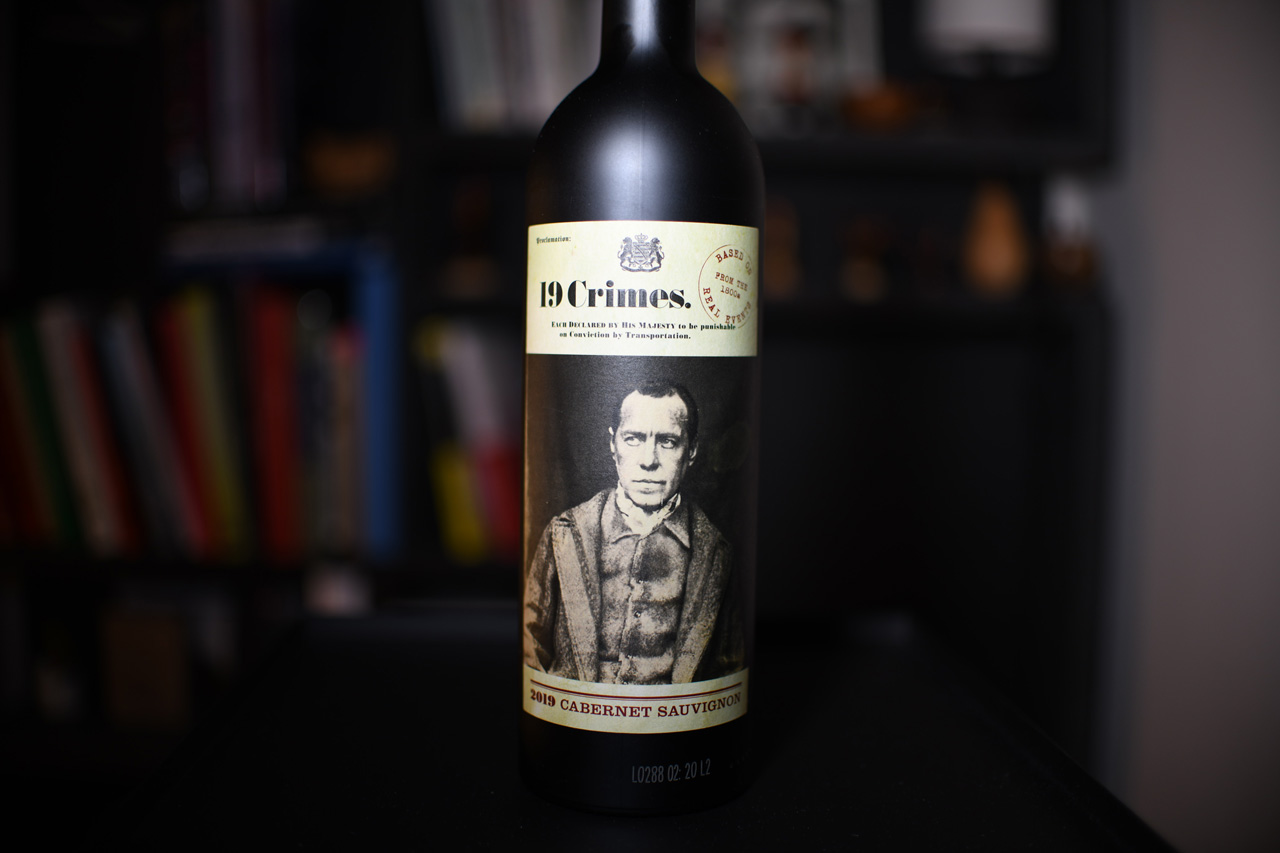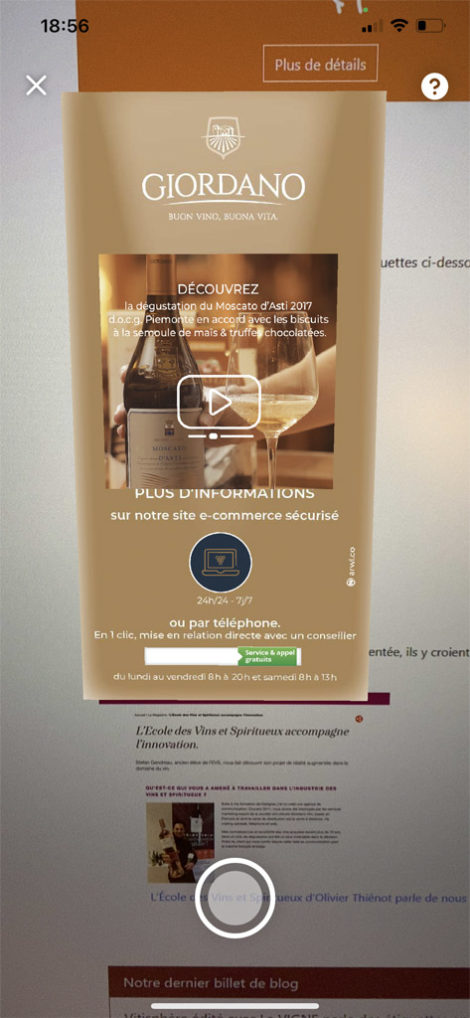
In 2018 the Australian group Treasury Wine Estates revolutionized the marketing of “mass market” wines. By introducing augmented reality with its “19 Crimes” wine, they turned the customer experience upside down, and sales of “19 Crimes” went from 4 million to 18 million bottles in just 18 months. A stroke of marketing genius that remains, despite many imitations, unmatched and wildly misunderstood by followers.
Summary
- Introduction
- 19 Crimes: analysis of a success
- 19 Crimes followers have not understood anything
- Good examples of augmented reality use
Introduction
When it comes to wine, the label is the “face” of the wine. It is often the only element to base a decision, especially in supermarkets where 86% of wine buyers go.
The label, therefore, plays a crucial role in the act of buying. More than a simple piece of information, it is also the medium through which the consumer’s imagination is mobilized. Its design (colors, shapes) often guides the buyer in the first place, even before reading the factual information on the bottle’s contents.
So, when augmented reality comes to upset this long-established framework, it inevitably attracts the attention of marketers looking for new ideas.

19 Crimes: The wine labels come to life
So, in 2018, the Australian group Treasury Wine Estates (400 million bottles nonetheless) unveiled its latest idea with great fanfare: using augmented reality to bring labels to life. The group rented the Alcatraz prison to present its innovation: a mobile application that brings labels to life. The effect is impressive, and the success is immediate as sales increase by almost 500% in just 18 months.
The label becomes a window to a story with nothing to do with the wine or the winery.
Why is it so successful?
Paradoxically, because the experience proposed had nothing to do with wine. The augmented reality experience was indeed “talking” the characters on the labels of 19 Crimes; bandits escaped from the Australian collective imagination of the 19th century. I say “paradoxically” because the label becomes a window to a story with nothing to do with the wine or the winery. And that’s precisely what I liked. This lack of a link between the label and the bottle’s content prevented Treasury Wine Estates from selling its wine in France for a while. The Evin legislation requires that what is on the label must be directly linked to the winegrowing operation.
A memorable story
The stroke of marketing genius was to break away from the classic codes of wine communication (grape variety, aromas, and so on) to talk about something completely different. The storytelling, supported by technology, becomes memorable, and the brand 19 Crimes is recognized. This is the effect that every brand tries to achieve when it is present on supermarkets’ shelves. And it worked perfectly with me as I bought a bottle to try this augmented reality experience for myself.
Weaknesses
This system’s first weakness is that you have to download a relatively large file before you can visualize the animation in augmented reality. This breaks the magic a little. The second weakness is that once you have tested the process, the novelty’s excitement may fade.
Strengths
But there are also 2 significant advantages. If the wine is good (you bought the bottle to drink it anyway, right?), then the “loyalty” effect can come into play. And as consumers are nevertheless somewhat risk-averse, this may allow starting a cycle of recurrent purchases. The second strong point, which is also related to customer loyalty, is what I call the collection effect. Treasury Wine Estate had an excellent idea to apply its marketing idea to several wines of the same “collection” so that the consumer will want to try the different augmented reality experiences and will therefore buy more than one bottle.
Idea for improvement
The 19 Crimes application can be used anonymously today. In the future, the customer experience could be enhanced by proposing some form of identification, such as SSO (Single-Sign-On). The advantage of SSO in this type of environment is that the brand can have direct contact with the user, which is usually impossible when you sell your products in a retail environment.
crédits : Shutterstock
Labels and augmented reality: the followers don’t understand marketing
Augmented reality applied to labels (wine, spirits, …) is now available to all, but few people understand the recipes for the marketing success of 19 Crimes. Imitations abound, but they are missing the point. They mistake the label for a giant QR code and throw out information that nobody wants.
Augmented reality should not be used to give the same information in another form.
Many businesses have taken advantage of the innovation proposed by Treasury Wine Estates to jump into the augmented reality niche. But the use cases that are offered do not meet the marketing requirements that made 19 Crimes a success.
 As you can see in the example opposite, some wineries give in to the temptation of the technology but are content to deliver the same information as on the label or, worse, use it to display a web page.
As you can see in the example opposite, some wineries give in to the temptation of the technology but are content to deliver the same information as on the label or, worse, use it to display a web page.
Augmented reality is used in the same way as a QR code: we display information on the grape variety, the serving temperature, … In the best case, a promotional video is displayed.
We feel that there is no real marketing strategy behind this. The technology is used here to deliver an “Ersatz” customer experience that pales in comparison to what the best ones propose (see also below in the “examples” section).
Augmented reality must be a window to the imagination, to the brand’s universe. It should never be a way to serve the same indigestible information in another form.
And then there are (big) brands that have better assimilated the process and that put the means to propose an excellent experience (see next paragraph).
Some successful examples of the use of augmented reality on alcohol bottles
When you have the means of your ambitions, the result is impressive. I can’t resist showing you what Johnnie Walker (whisky) and Bombay Sapphire (gin) have imagined thanks to augmented reality.
Posted in Innovation, Marketing.


